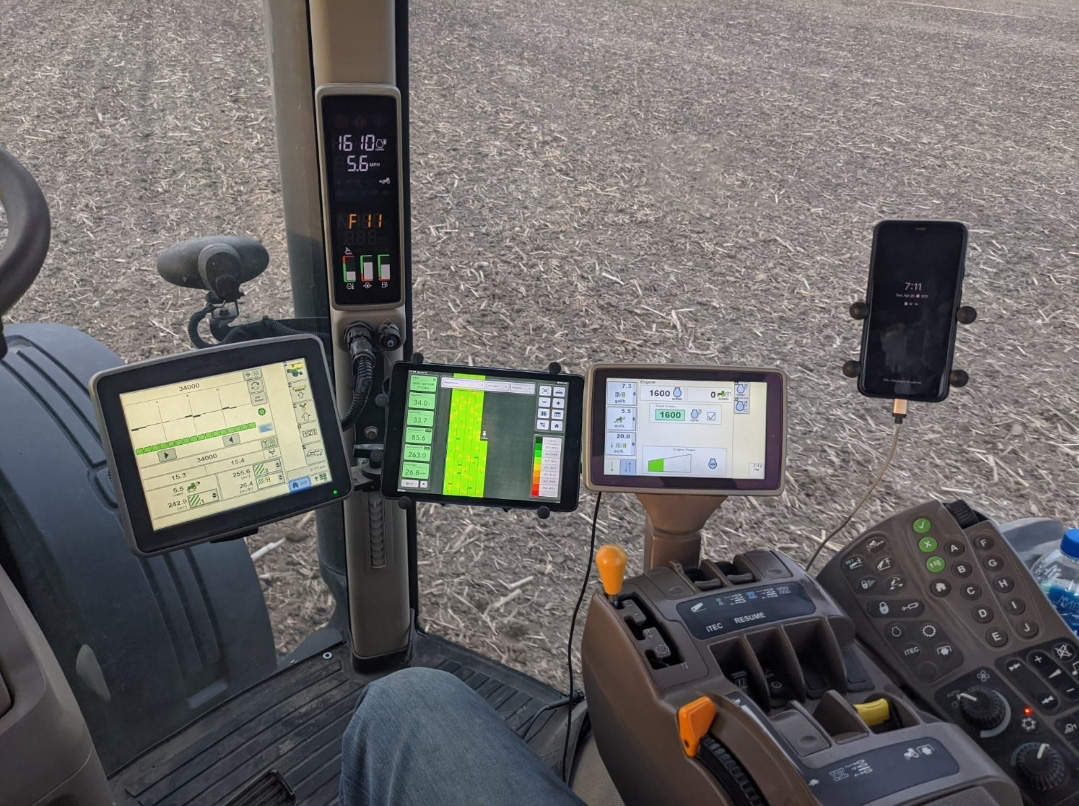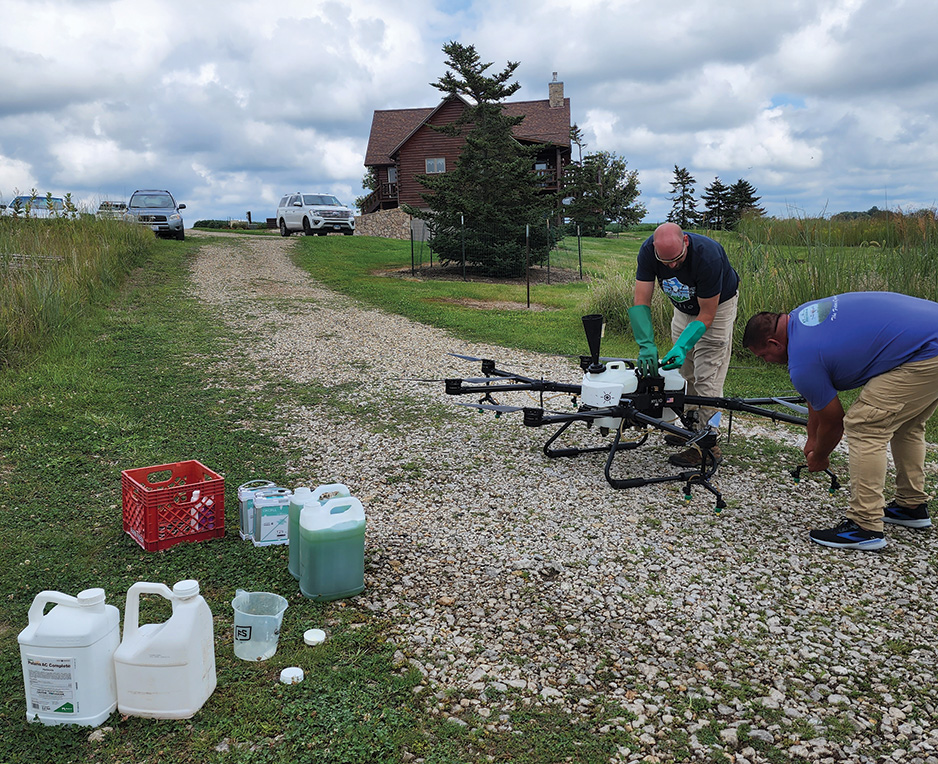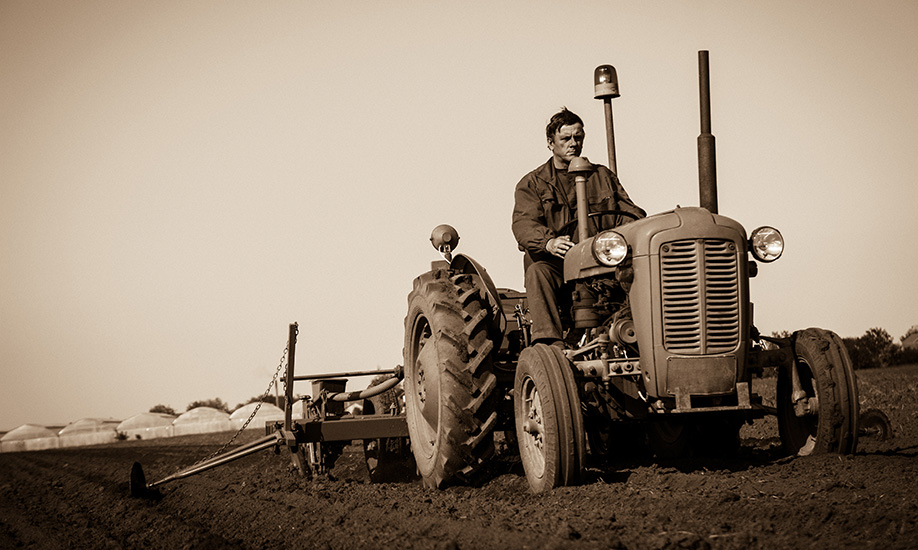Today, driving a piece of farm equipment is a high-tech endeavor
One hundred years ago, the majority of farms in this country were using horses instead of tractors. It’s hard to fathom this by looking at modern agriculture and its highly sophisticated machinery, which is now guided by satellites and produces 10 times the yields of the 1920s.
There have been several technology milestones in agriculture over the last century such as commercial fertilizer, hybrid corn and GMOs. However, it’s the machinery that most people want to talk about.
I think back to when I was a kid, probably 12 years old, and I would be
“voluntold” which tractor that I was getting to work in that day to apply anhydrous ammonia (the stuff in the white tanks). My dad would explain that I was to drive 8 miles an hour to get the proper amount of product on the field. Mind you, there was not a speedometer in this tractor, but there was a dial on the dash that would help me identify roughly how fast I was going by looking at what gear I was in and how much throttle I was using. By trial and error, I learned how to get to 8 miles an hour.
And then I reached behind me and pulled a rope that was attached to the tank valve to release the gas, which was then knifed into the ground and turned into the liquid nitrogen that fertilized the corn plant.
The entire procedure was less than 100% accurate, to say the least.
Generally, you would err on the philosophy of “more is better.” This led to farmers applying more fertilizer, pesticides and herbicides than were actually needed.

As I look at the equipment that I have on my farm today, I am amazed… and often overwhelmed. Machines that cost more than my house and my neighbor’s house combined. Machines that measure their speed down to one-tenth of a mile per hour by using a combination of radar and satellites signals, instead of wheel rotation. Machines that are able to drive themselves and even compensate for slopes in order to utilize every inch of ground effectively.
It’s not just the tractors that are amazing. The implements they pull have improved, as well. For example, my corn planter is a completely different device from when I grew up. We used to just be concerned with getting the right number of seeds per acre planted, and hopefully they were planted at the right depth.
a drone costs around $30,000 … a ground sprayer can cost
north of $500,000
Nowadays, farmers consider all the variables. We want every single seed to be planted exactly the same distance apart, as well as having a perfectly consistent seed depth. The seed spacing is tracked by sensors at every single row and is shown in the cab so the farmer can see if there is a problem. The planter is kept at a constant pressure to the ground using pneumatic down force run by sensors that are constantly tracking how firm the ground is.
Spraying technology is equally impressive. Not only do today’s sprayers shut off row by row so the farmer doesn’t overspray, now they have the ability to spray only the weeds and not bare ground. It allows the farmers to apply the minimal amount of herbicide and yet still be effective.

The newest craze in agriculture is spraying with drones. At first, I scoffed at this idea just because a drone can’t carry much weight. But drones can spray somewhere around five acres before they need to be refilled. Compare this to a ground sprayer that can spray 1,000 acres plus before a refill. However, a drone costs around $30,000 and a ground sprayer can cost north of $500,000. When you consider a farmer can buy six drones and swarm spray a field for almost half the cost, they might be the future. (Listen to a podcast on drones at https://sharkfarmer.libsyn.com/268-mark-black-matt-brooks-flying-drones)
Here in central Illinois, we are blessed with abundant water. Most years there is enough rainfall to grow a profitable crop. That is not the case everywhere. About 15% of U.S. crops, and 21% of the world’s crops, are irrigated. As you can imagine, the areas that need irrigation are some of the most precipitation-deficient places in the country.
The advancements in watering crops often have been overlooked. The center pivots that dot large areas of cropland out west have evolved by lowering the sprinklers to minimize the amount of time water is in the air.
More and more, above-ground sprinkler systems are being replaced by drip irrigation that reduces water use from 30% to 70%. Add that to better weather apps that can more accurately predict rainfall per field, allowing farmers to shut the irrigation off earlier. Many farmers can shut them off with their phones.
It is impossible to truly show the innovations that help feed the world in one magazine article, but if it sparks your interest, reach out to a farmer. I’m not going to suggest that you stop and ask for a ride when you see a combine, but I will say this: I’ll stop and talk to anyone interested in farming. You also can watch “A Shot of Ag” on Thursday nights on good ol’ WTVP.





